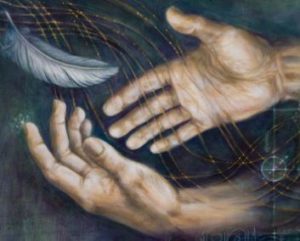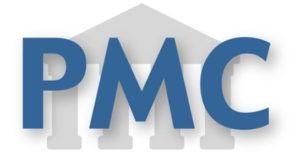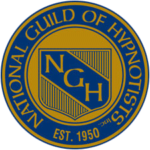 Touch has been utilized for healing for as long as humans have existed. Human beings are social, and touch is a powerful therapeutic social tool. Our brain, mind, and body all respond to touch on an subconscious level.
Touch has been utilized for healing for as long as humans have existed. Human beings are social, and touch is a powerful therapeutic social tool. Our brain, mind, and body all respond to touch on an subconscious level.
From shamanic traditions to modern massage therapy, all healers throughout the ages knew that touch is healing. Not only does touch allow the body to produce positive-feeling hormones such as dopamine, but touch has been proven in our modern world of scientific research to lead to an improved immune system, decrease anxiety, depression and stress.
In our modern western world, we have multiple systems of touch, with many names and protocols. Hospitals in Minnesota now allow nurses to practice Healing Touch (HT) a system developed by Janet Mentgen. Therapeutic Touch (TT) was another system which preceded it.. In addition to Touch for Health (by Dr. Thie). Newer systems include ones such as Dynamic Body Balancing (DBB) by Dr. Carol Philips. I can think of at least 10 different touch systems that heal individuals and families, there are too many to list here.
Some systems focus on muscles and joints, others focus on moving bioenergy by stimulating acupuncture points or meridians. Some systems even work off the body with little or no touch. Regardless of what system, when the practitioner is competent, powerful healing results.
One reason, among many, why touch produces healing on the mental / emotional level is that it utilizes the body as a healing tool. The mind and body are one, trauma & feelings are stored in the body, by working on the body we reintegrate the mind and body, we move the trauma.. emotions are energy in motion (e-motion) and when they get stuck hands-on or energy work allows them to get back into motion… when this happens the trauma and negative energy get dissipated or transmuted.
I am a proponent of the use of body awareness and touch in mental health, nurses and massage therapists, and yoga instructors also allow you to experience the use of your body to heal the mind. Many mental illness states result in a dissociation from the body, and oftentimes when abuse or trauma are factors the abuse causes dissociation as a protection mechanism known as “primitive defense”.
Often the path to healing will integrate the body back with the mind, regardless how this work is done. Using the body to heal emotionally or physically can be done “virtually” in the mind using imagery, or physically with bodywork. Even simple body awareness alone (done with imagery, talk therapy, hypnosis, coaching..) starts to restore that integration and balance finally allowing clients to be empowered and be on their journey to being well-integrated and balanced.
I work with both the mind and the body to help my clients (who have often been stuck for years) finally see positive improvements, regardless of the issues they suffer from, be it pain, stress, or any distress whether emotional or physical. Most mental health professionals prefer to remain specialized in talk therapy. However, I address both. With my clients’ consent. My education in systems that utilize body work along with mental health work allows me to select the perfect tools from my tool boxes to suit every specific client in a unique manner. Rather than asking clients to fit into my paradigm of therapy, I follow my clients’ paradigm of life and healing.
 I came across this study, it is worth sharing because of the counter-intuitive nature of this study, yet the results are not surprising. It compared massage to relaxation skills.
I came across this study, it is worth sharing because of the counter-intuitive nature of this study, yet the results are not surprising. It compared massage to relaxation skills.
The most important part of the findings is that relaxation therapy did not lower negative attitudes to touch.
“Women (mean age = 35 years) who had experienced sexual abuse, were given a 30-minute massage twice a week for 1 month. Immediately after the massage the women reported being less depressed and less anxious and their salivary cortisol levels decreased following the session. Over the 1-month treatment period the massage therapy group experienced a decrease in depression and in life event stress. Although the relaxation therapy control group also reported a decrease in anxiety and depression, their stress hormones did not change, and they reported an increasingly negative attitude toward touch.”
The researchers concluded that:
“The greater improvement of the massage group could . . . relate to the special significance of a positive touch experience following one of abusive touch.”
When done correctly and by a competent and intuitive therapist, relaxation therapy such as hypnotherapy, guided imagery do lower stress and increase the release of relaxation and calming hormones, Oxytocin being the most well-known. The relaxation therapist, once she incorporates exposure therapy, age regression, informed adult, and forgiveness therapies and hypnosis, can impact “healing” and result in a reduction to the negative attitude towards touch.
Relaxation training alone wont help the client process the trauma! Therapy is needed to process the trauma. Somatoemotional release, and the utilization of body awareness can happen virtually in the mind, or with bodywork.
source: https://scholars.duke.edu/display/pub752330
Read more on the release of Oxytocin via human touch
Human Connections Start With A Friendly Touch:
https://www.npr.org/templates/story/story.php?storyId=128795325
Touching makes you healthier:
http://www.cnn.com/2011/HEALTH/01/05/touching.makes.you.healthier.health/index.html







